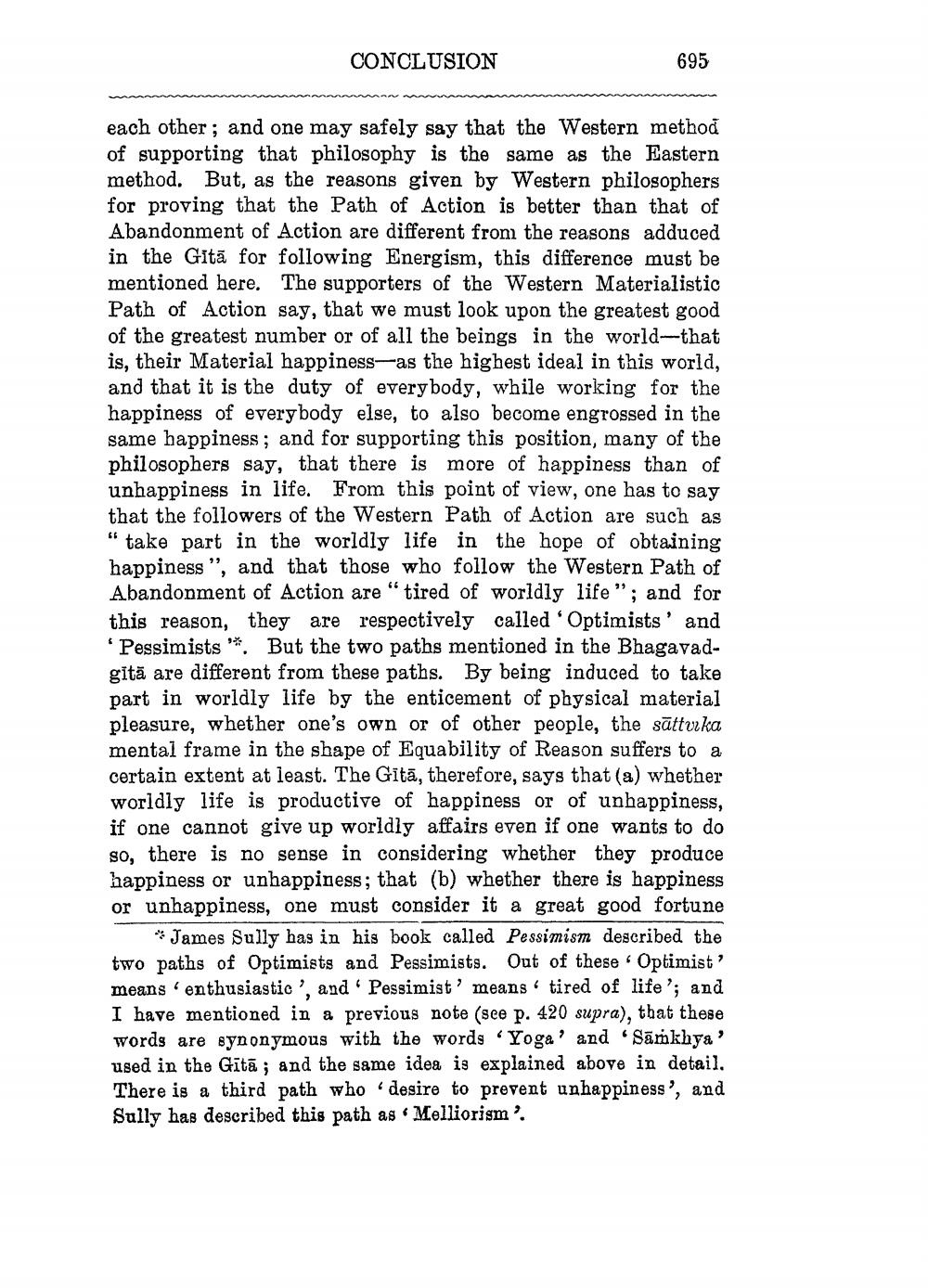________________
CONCLUSION
695
each other; and one may safely say that the Western method of supporting that philosophy is the same as the Eastern method. But, as the reasons given by Western philosophers for proving that the Path of Action is better than that of Abandonment of Action are different from the reasons adduced in the Gitā for following Energism, this difference must be mentioned here. The supporters of the Western Materialistic Path of Action say, that we must look upon the greatest good of the greatest number or of all the beings in the world--that is, their Material happiness-as the highest ideal in this world, and that it is the duty of everybody, while working for the happiness of everybody else, to also become engrossed in the same happiness; and for supporting this position, many of the philosophers say, that there is more of happiness than of unhappiness in life. From this point of view, one has to say that the followers of the Western Path of Action are such as "take part in the worldly life in the hope of obtaining happiness", and that those who follow the Western Path of Abandonment of Action are " tired of worldly life"; and for this reason, they are respectively called 'Optimists' and
Pessimists **. But the two paths mentioned in the Bhagavadgitā are different from these paths. By being induced to take part in worldly life by the enticement of physical material pleasure, whether one's own or of other people, the sättvika mental frame in the shape of Equability of Reason suffers to a certain extent at least. The Gītā, therefore, says that (a) whether worldly life is productive of happiness or of unhappiness, if one cannot give up worldly affairs even if one wants to do so, there is no sense in considering whether they produce happiness or unhappiness; that (b) whether there is happiness or unhappiness, one must consider it a great good fortune
James Sully has in his book called Pessimism described the two paths of Optimists and Pessimists. Out of these Optimist' means 'enthusiastic, and Pessimist' meanstired of life'; and I have mentioned in a previous note (see p. 420 supra), that these words are synonymous with the words 'Yoga' and 'Sāmkhya' used in the Gītā; and the same idea is explained above in detail, There is a third path who desire to prevent unhappiness', and Sully has described this path as Melliorism'.




